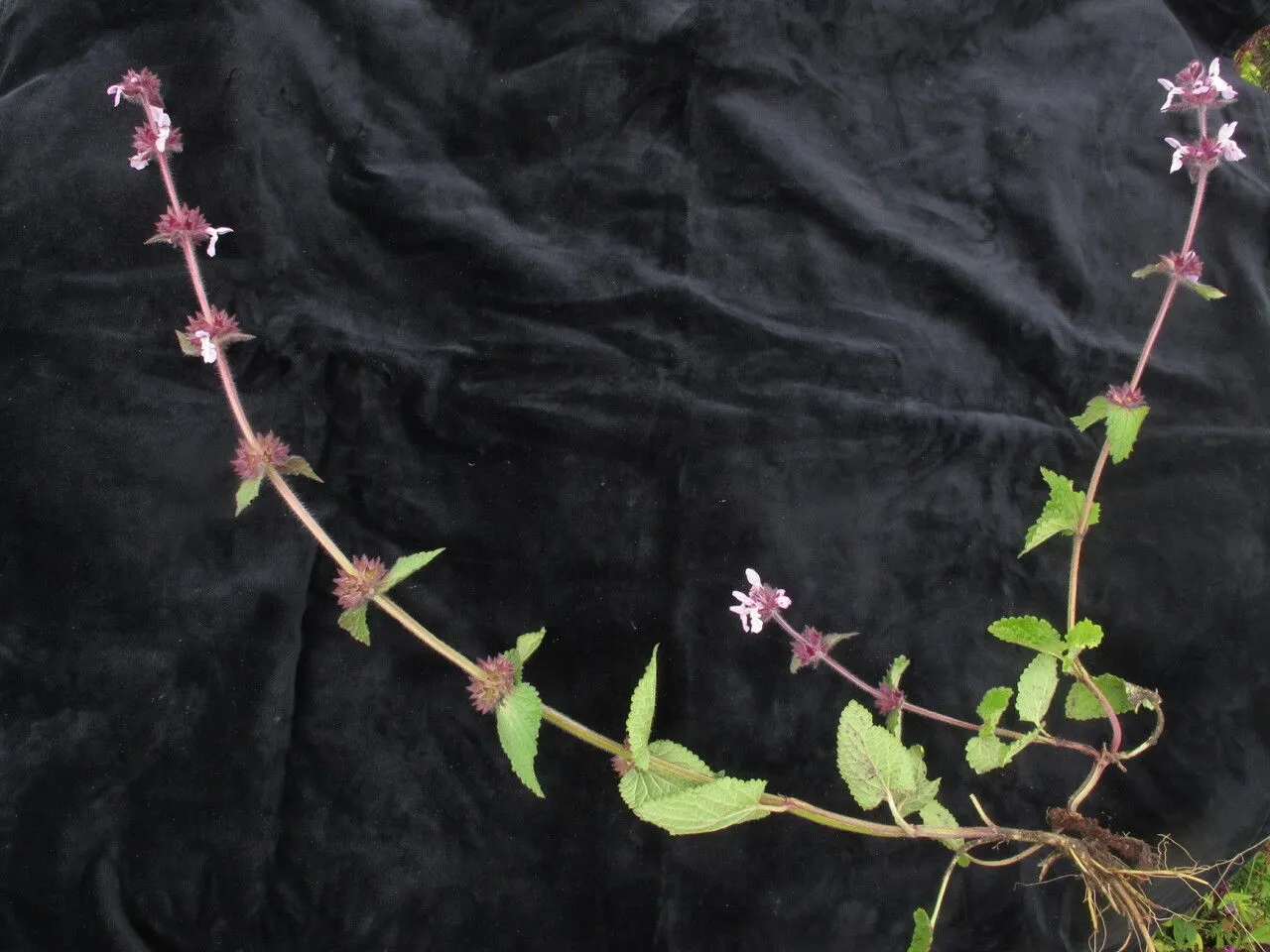
Author: Nutt. ex Benth.
Bibliography: A.P.de Candolle, Prodr. 12: 472 (1848)
Year: 1848
Status: accepted
Rank: species
Genus: Stachys
Vegetable: False
Observations: W. U.S.A. to Mexico (N. Baja California)
Rough hedgenettle, scientifically known as Stachys rigida, is a remarkable perennial plant belonging to the Lamiaceae family. This species was first described in the authoritative botanical work “Prodromus Systematis Naturalis Regni Vegetabilis” by the esteemed botanist A.P. de Candolle in 1848, further attributed to Nutt. ex Benth.
This plant is predominantly found in the western United States, extending its range into northern Baja California, Mexico. The rough hedgenettle thrives in regions with a temperate climate, often flourishing in open meadows, along stream banks, and in forest clearings where it can receive ample sunlight.
Stachys rigida is characterized by its coarse, hairy stems and leaves. The foliage emits a distinctive, mildly aromatic scent when crushed, a trait common among members of the mint family. The leaves are typically arranged in opposite pairs along the stem and are covered in fine hairs, giving them a rough texture that is reflected in the plant’s common name.
The flowering period of the rough hedgenettle occurs in the summer months, during which it produces dense clusters of tubular flowers. These blossoms are usually pink to pale purple and are highly attractive to pollinators, particularly bees and butterflies. The flowers are bilaterally symmetrical and exhibit the classic structure of Lamiaceae flowers, with a prominent upper lip and a lower lip serving as a landing platform for visiting insects.
Ecologically, Stachys rigida plays a significant role in its native habitat. It provides food and habitat for various pollinators and other beneficial insects, contributing to the biodiversity and health of the ecosystem. Gardeners and naturalists value this plant not only for its ecological benefits but also for its resilience and ease of cultivation in suitable habitats.
In summary, the rough hedgenettle is a noteworthy species of the mint family, appreciated for its hardiness, ecological value, and the beauty of its flowers. Its presence from the western USA to northern Baja California highlights its adaptability and enduring presence in the native flora of these regions.
Eng: rough hedgenettle
En: Rough hedgenettle, Rough Hedge-Nettle, Rigid hedgenettle
Fa: سنبلهای ریجیدا
Taken Sep 1, 2014 by Royal Botanic Garden Edinburgh – Anonymous (cc-by-nc)
Taken Sep 1, 2014 by Royal Botanic Garden Edinburgh – Anonymous (cc-by-nc)
Taken Sep 1, 2014 by Royal Botanic Garden Edinburgh – Anonymous (cc-by-nc)
Taken Sep 1, 2014 by Royal Botanic Garden Edinburgh – Anonymous (cc-by-nc)
Taken Sep 1, 2014 by Royal Botanic Garden Edinburgh – Anonymous (cc-by-nc)
Taken Jul 1, 1952 by Royal Botanic Garden Edinburgh – Anonymous (cc-by-nc)
Taken Aug 12, 1991 by Royal Botanic Garden Edinburgh – Anonymous (cc-by-nc)
Taken Aug 4, 1991 by Royal Botanic Garden Edinburgh – Anonymous (cc-by-nc)
Taken Sep 30, 1991 by Royal Botanic Garden Edinburgh – Anonymous (cc-by-nc)
Taken Jul 11, 1952 by Royal Botanic Garden Edinburgh – Anonymous (cc-by-nc)
Taken Aug 12, 1991 by Royal Botanic Garden Edinburgh – Anonymous (cc-by-nc)
Growth habit>: Forb/herb
Family: Myrtaceae Author: (F.Muell.) K.D.Hill & L.A.S.Johnson Bibliography: Telopea 6: 402 (1995) Year: 1995 Status:…
Family: Rubiaceae Author: Pierre ex A.Froehner Bibliography: Notizbl. Bot. Gart. Berlin-Dahlem 1: 237 (1897) Year:…
Family: Sapindaceae Author: Koidz. Bibliography: J. Coll. Sci. Imp. Univ. Tokyo 32(1): 38 (1911) Year:…
Family: Asteraceae Author: A.Gray Bibliography: Pacif. Railr. Rep.: 107 (1857) Year: 1857 Status: accepted Rank:…
Family: Fabaceae Author: Medik. Bibliography: Vorles. Churpfälz. Phys.-Ökon. Ges. 2: 398 (1787) Year: 1787 Status:…
Family: Aspleniaceae Author: (Cav.) Alston Bibliography: Bull. Misc. Inform. Kew 1932: 309 (1932) Year: 1932…